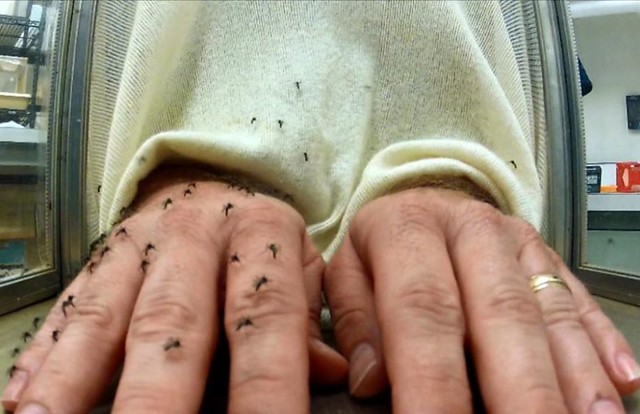
For over 75 years, USDA scientists have been developing ways to protect the U.S. military around the world from powerful adversaries—mosquitoes and other biting arthropods that cause disease. Their work began in 1942 in a small USDA field laboratory in Orlando, where scientists made key discoveries about new chemicals for controlling these pests. At the time, the most effective repellents lasted only 2 hours, and the U.S. military needed a repellent that could protect for 10 hours. In 1952, testing in Orlando confirmed DEET was an effective repellent; it was soon adopted for use by the U.S. Army, became commercially available by 1957—and is still used widely today.
Scientists at the Agricultural Research Service (ARS), USDA’s chief in-house research agency, have continued their search for better repellents ever since. They used the USDA database of 30,000 compounds to develop a model that used chemical structure data for predicting how long a repellent would keep pests away. This model predicted that some compounds would be more effective than DEET, and subsequent research confirmed some compounds did indeed repel pests more than three times longer than DEET.
In 2004, the Department of Defense initiated a partnership with USDA and others as part of the Deployed War-Fighter Protection (DWFP) program. Its' mission: to develop and test management tools for pest and vector species that transmit diseases to deployed U.S. troops. ARS scientists in Gainesville, Florida; Beltsville, Maryland; and Oxford, Mississippi, have contributed discoveries about repellent as part of the DWFP research and accomplishments. ARS has also collaborated with the U.S. Army Natick Soldier Systems Center since 2003 to optimize the arthropod bite protection of factory-produced permethrin-treated uniforms. Treating uniforms became standard practice in the 1950s, first with a miticide, and starting in 1991 with permethrin.
ARS National Program Leader Uli Bernier has been responsible for developing protocols to evaluate uniform protection against mosquitoes, and in 2015 conducted a study that led to the registration of etofenprox as an alternative clothing repellent. He recently staffed an ARS information table at the 5th USA Science & Engineering Festival Expo, where he said visitors wanted to learn more about a new pest-resistant tropical lightweight uniform on display. Visitors were also fascinated by a cage of mosquitoes used for research—but unlike USDA researchers, they were reluctant to place their hand in a cage full of mosquitoes!
This Military Appreciation Month, we pay special tribute to the efforts of our servicemen and women. USDA honors our military and will continue to support their work.

